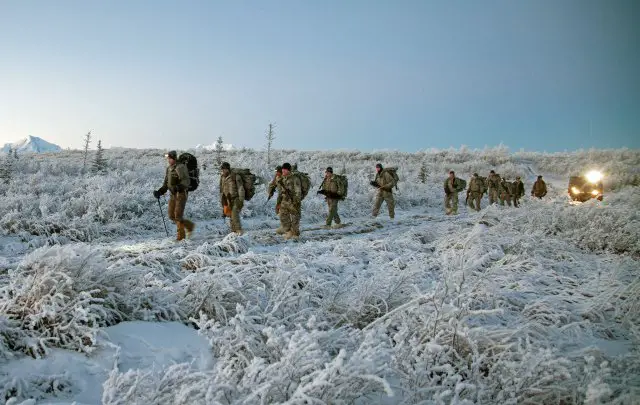Breaking news
US Army tests a new modular body armour 42005162.
|
|
|||
|
Defence & Security News - USA
|
|||
|
|
|||
| US Army tests a new modular body armour | |||
|
The United States Army is testing a new type of modular body armour system that can be scaled according to the mission’s degree of severity. The system is tested in various climatic conditions and under different scenarios to prove whether it can provide the required results with the minimum obstruction to the human body’s moves.
|
|||
|
|
|||
 US Army soldiers marching in extreme cold weather conditions in Alaska wearing the scalable body armour (Photo: US Army)
|
|||
|
|
|||
|
The new modular body armour was recently tested in Alaska, at the US Army Cold Regions Test Centre. The results were interesting for two reasons. The first being the body armour’s capabilities under extreme cold weather conditions and the second, the resulting improved methodologies for human factors testing. The new body armour can be scaled up or back in four levels. The soldier has available a range of soft and hard plates that can be added or removed depending on the mission. At its maximum level of protection, the body armour includes a combat shirt with integrated soft armour and groin protection. The tests included a series of dynamic exercises to test the body armour’s flexibility and ease of use for the soldiers. According to Isaac Howell, the test officer, "The standard anthropomorphic measurements historically utilized in human factors engineering testing are static, not dynamic. You sit in a chair and bend over and I measure that angle with an instrument. That's a static measurement -- even a layperson can see the limitations in that kind of measurement." The physical tests were progressive, starting from the soldiers wearing no protection to finally wearing the full scale of body armour. That allowed the test team to evaluate how much of a person’s flexibility is removed by wearing the various levels of protection. The tests also included an obstacle course, long marches with full combat gear and combat moves. Finally, the soldiers had to practice ingress and egress from all the hatches of combat vehicles, including the Stryker, and operation of all of the vehicles’ functions. |
|||





























